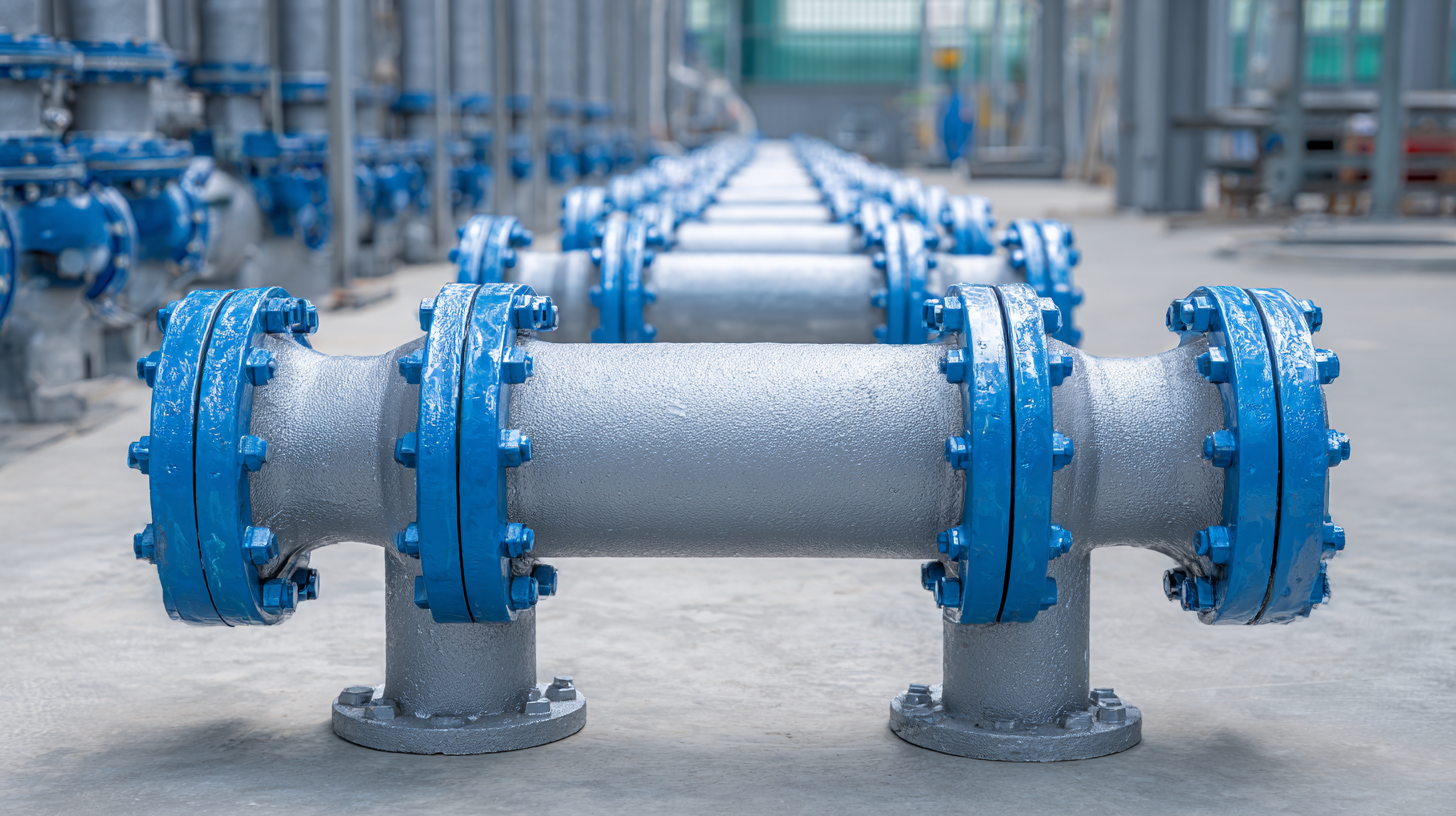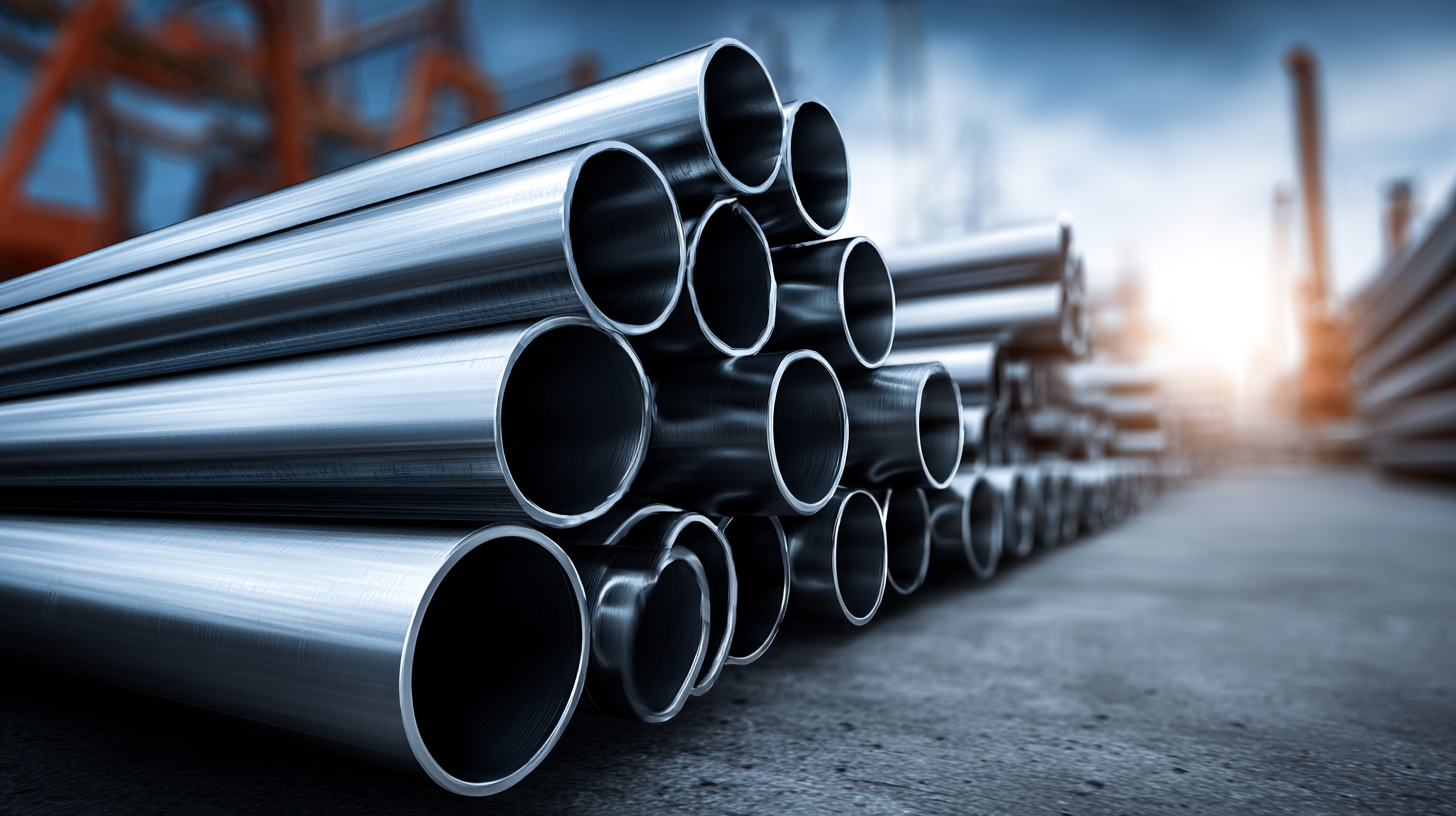 The construction industry is experiencing a paradigm shift towards sustainability, and innovations in pipe fittings are at the forefront of this transformation. As per a report by Grand View Research, the global pipe fittings market is projected to reach USD 100 billion by 2027, driven by the increasing demand for efficient water management systems and sustainable building practices. In this context, advancements in materials such as recycled plastics and corrosion-resistant alloys are revolutionizing traditional pipe fittings, making them more durable and eco-friendly. Moreover, the integration of smart technologies is enhancing the functionality of pipe fittings, allowing for real-time monitoring and improved resource management. These trends underscore the critical role that innovative pipe fittings play in promoting sustainability within the construction sector, paving the way for greener infrastructure and responsible resource use in the coming years.
The construction industry is experiencing a paradigm shift towards sustainability, and innovations in pipe fittings are at the forefront of this transformation. As per a report by Grand View Research, the global pipe fittings market is projected to reach USD 100 billion by 2027, driven by the increasing demand for efficient water management systems and sustainable building practices. In this context, advancements in materials such as recycled plastics and corrosion-resistant alloys are revolutionizing traditional pipe fittings, making them more durable and eco-friendly. Moreover, the integration of smart technologies is enhancing the functionality of pipe fittings, allowing for real-time monitoring and improved resource management. These trends underscore the critical role that innovative pipe fittings play in promoting sustainability within the construction sector, paving the way for greener infrastructure and responsible resource use in the coming years.
The construction industry faces significant pressure to reduce its carbon footprint, and innovative pipe fittings are leading the charge in this sustainability revolution. According to a report by the World Green Building Council, buildings are responsible for 39% of global carbon emissions, with a substantial portion coming from inefficient plumbing systems. By integrating advanced materials and designs, new pipe fittings not only enhance durability but also streamline installation processes, resulting in less waste and reduced energy consumption throughout the project lifecycle.
Incorporating lightweight, recyclable materials into pipe fitting designs can significantly lower the environmental impact. For instance, using high-density polyethylene (HDPE) fittings can reduce greenhouse gas emissions by up to 30% compared to traditional metal options. Additionally, innovative designs that prevent leaks and enhance flow efficiency contribute to water conservation efforts, which are crucial as global water scarcity becomes a growing concern.
**Tips:** When selecting pipe fittings for construction projects, consider those certified by green building standards such as LEED or BREEAM, as these products often prioritize sustainability. Additionally, collaborate with suppliers who are committed to environmentally friendly practices, which can streamline the sourcing of eco-conscious materials.
This bar chart illustrates the carbon footprint reduction achieved through innovative pipe fittings in construction projects. The data showcases the percentage of carbon emissions reduced by various fitting technologies.
The role of recycling technologies in pipe fitting production is increasingly pivotal for promoting sustainability in construction. With the construction industry responsible for about 39% of global carbon emissions, innovative recycling methods are being adopted to mitigate environmental impacts. For instance, a recent report from the Global Recycling Foundation highlighted that utilizing recycled materials can reduce energy consumption by up to 70% in the production of new pipe fittings. This is a significant step towards achieving a circular economy within the sector.
Moreover, advancements in recycling technologies, such as advanced sorting and processing systems, enhance the quality of recycled materials. According to a study by the National Association of Manufacturers, incorporating recycled content in products not only lessens the demand for virgin resources but also contributes to a decreased landfill burden, with an estimated 75 million metric tons of plastics being recycled annually in the U.S. alone. As these technologies evolve, they offer construction companies the opportunity to create high-quality pipe fittings while embracing environmental responsibility, illustrating the seamless integration of sustainability within the industry.
The construction industry is witnessing a revolutionary shift with the introduction of emerging smart materials in pipe fittings. These innovations not only enhance performance but also significantly contribute to achieving higher efficiency and sustainability in building projects. Smart materials, such as shape memory alloys and thermochromic polymers, adapt to varying environmental conditions, optimizing fluid flow and reducing energy consumption. This dynamic adaptability allows builders to design more resilient infrastructures that can better withstand stressors like temperature fluctuations and pressure changes.

Moreover, the integration of sensor technologies into pipe fittings transforms the approach to maintenance and monitoring. For instance, smart fittings equipped with embedded sensors can provide real-time data on fluid pressure and quality, enabling proactive maintenance and minimizing leaks. This use of intelligent materials ultimately leads to reduced waste and lower lifecycle costs, making construction practices more sustainable. As the industry continues to evolve, the emphasis on these advanced materials highlights a commitment to not only innovation but also environmental stewardship in the construction sector.
In recent years, the construction industry has seen a significant shift towards sustainable practices, with pipe fittings being a crucial focal point for innovation. Case studies from major projects highlight how organizations are embracing eco-friendly materials and technologies. For example, a prominent green building project in California successfully integrated recycled PVC and bioplastic fittings, demonstrating both durability and reduced environmental impact. This initiative not only decreased carbon emissions but also set a precedent for future construction practices.
Another notable case is the implementation of modular piping systems in a large-scale infrastructure project in Europe. These systems, made from sustainable materials, allowed for faster installation and minimized waste during construction. The project reported a remarkable reduction in water leakage, contributing to better resource management overall. Such successful examples underline the critical role that innovative pipe fittings play in promoting sustainability while also enhancing efficiency in construction processes.

As regulatory frameworks evolve, they play an increasingly crucial role in shaping sustainable pipe fitting innovations within the construction industry. The push for environmentally friendly practices has led to the implementation of stricter building codes and standards. According to a report by the International Code Council, over 40% of local governments are now adopting green building codes, emphasizing the need for materials and designs that minimize environmental impacts. These regulations not only drive innovation in pipe fittings but also encourage manufacturers to explore more sustainable materials, such as recycled plastics and low-emission metals.
Moreover, the global market for sustainable pipe fittings is projected to grow significantly, with a study by Grand View Research estimating a compound annual growth rate (CAGR) of 7.3% from 2021 to 2028. This growth is largely attributed to regulatory pressures that mandate the reduction of carbon footprints in construction activities. Policies promoting energy efficiency and waste reduction are thus pivotal in fostering a culture of sustainability. As regulatory bodies continue to tighten their standards, the industry is likely to witness a surge in innovations that not only meet these challenges but also promote overall environmental stewardship in construction.
| Innovation Area | Description | Sustainability Impact | Regulatory Influence |
|---|---|---|---|
| Recycled Materials | Utilizing post-consumer and industrial plastic waste in pipe fittings. | Reduces landfill waste and carbon footprint. | Regulations incentivizing recycling and waste reduction. |
| Smart Fittings | Integration of sensors for monitoring pressure and leakage. | Promotes water conservation and leak prevention. | Policies requiring real-time monitoring to enhance efficiency. |
| Biodegradable Options | Development of fittings made from organic materials that decompose. | Minimizes long-term environmental impacts. | Regulations mandating eco-friendly materials in construction. |
| Modular Fittings | Design that allows for easy assembly and disassembly. | Reduces material waste during installation. | Encouragement of modular designs in sustainable building codes. |
| Energy-efficient Production | Techniques to lower energy consumption during manufacturing. | Significantly lowers the carbon footprint of production. | Incentives for manufacturers adopting green technologies. |








